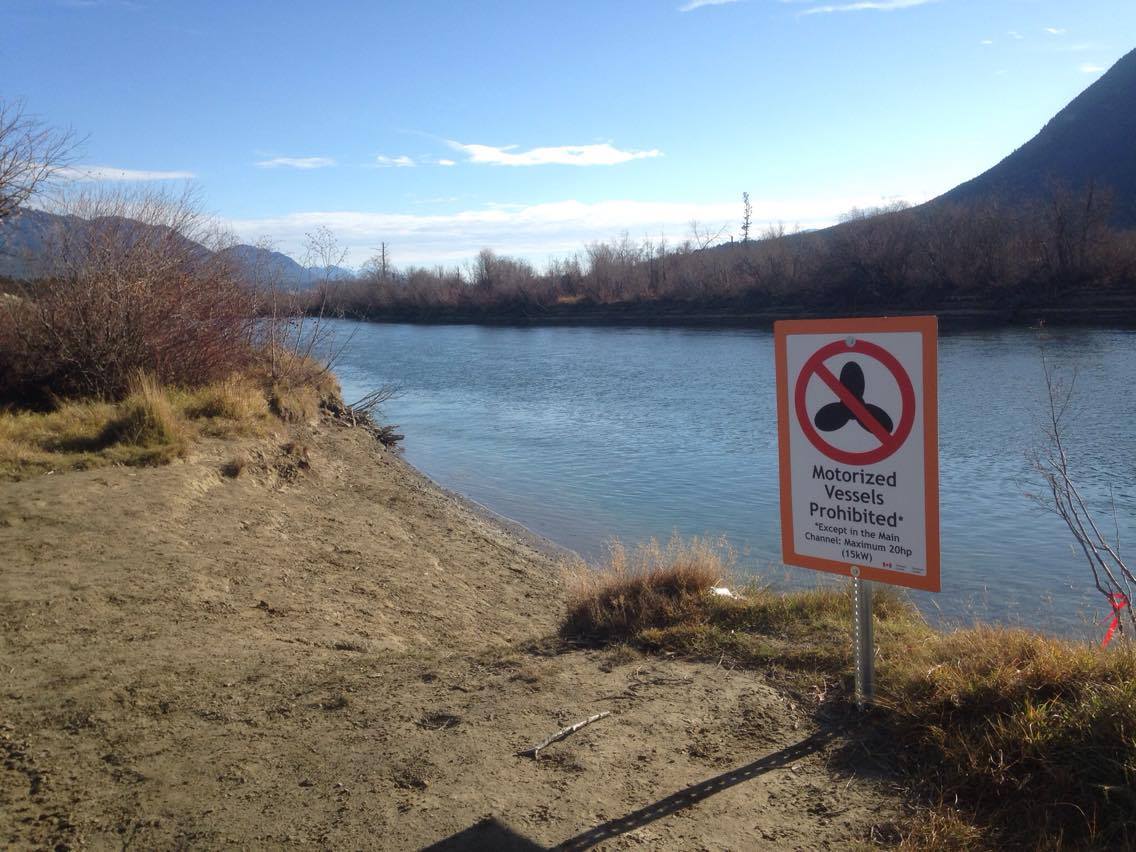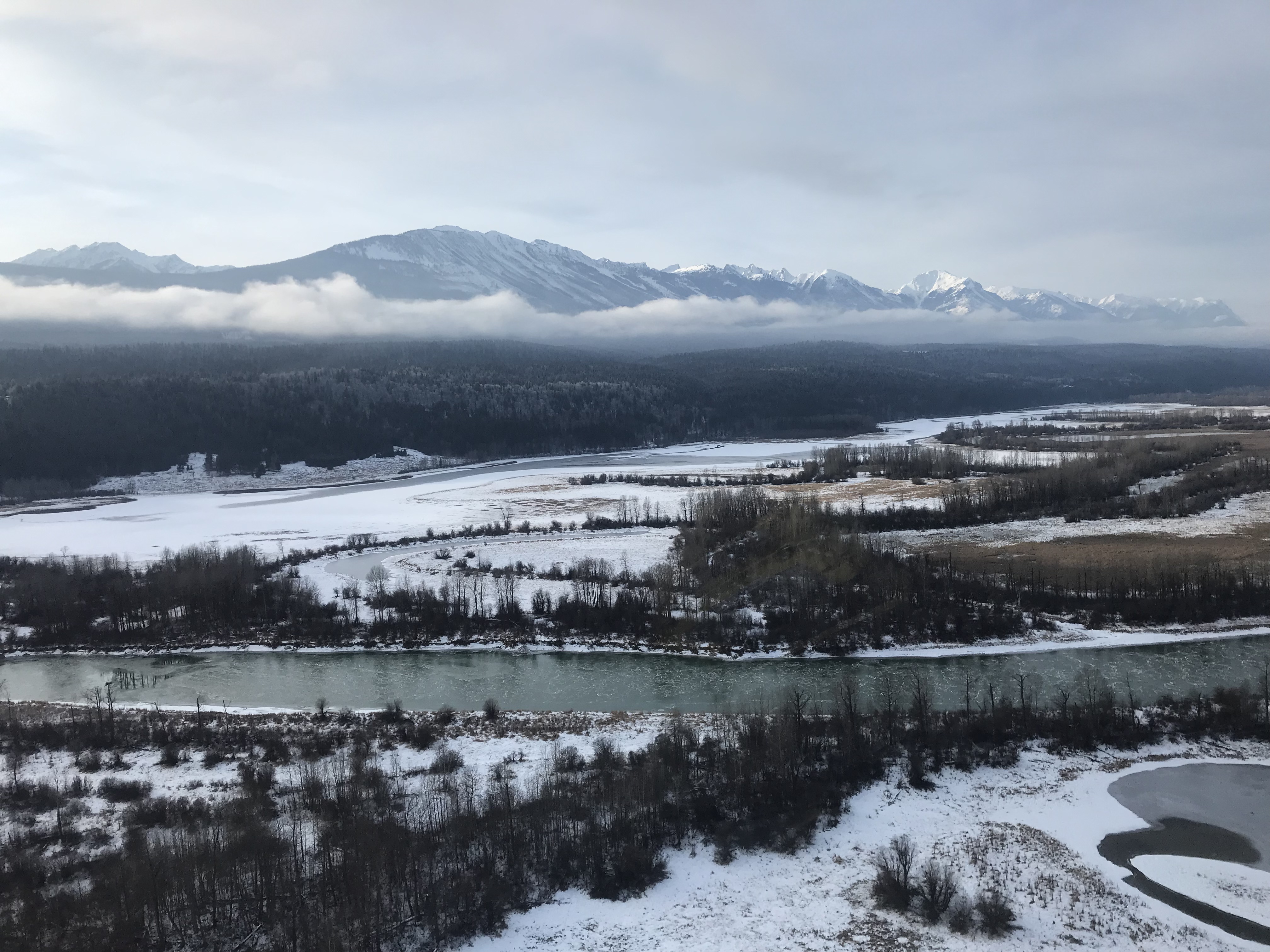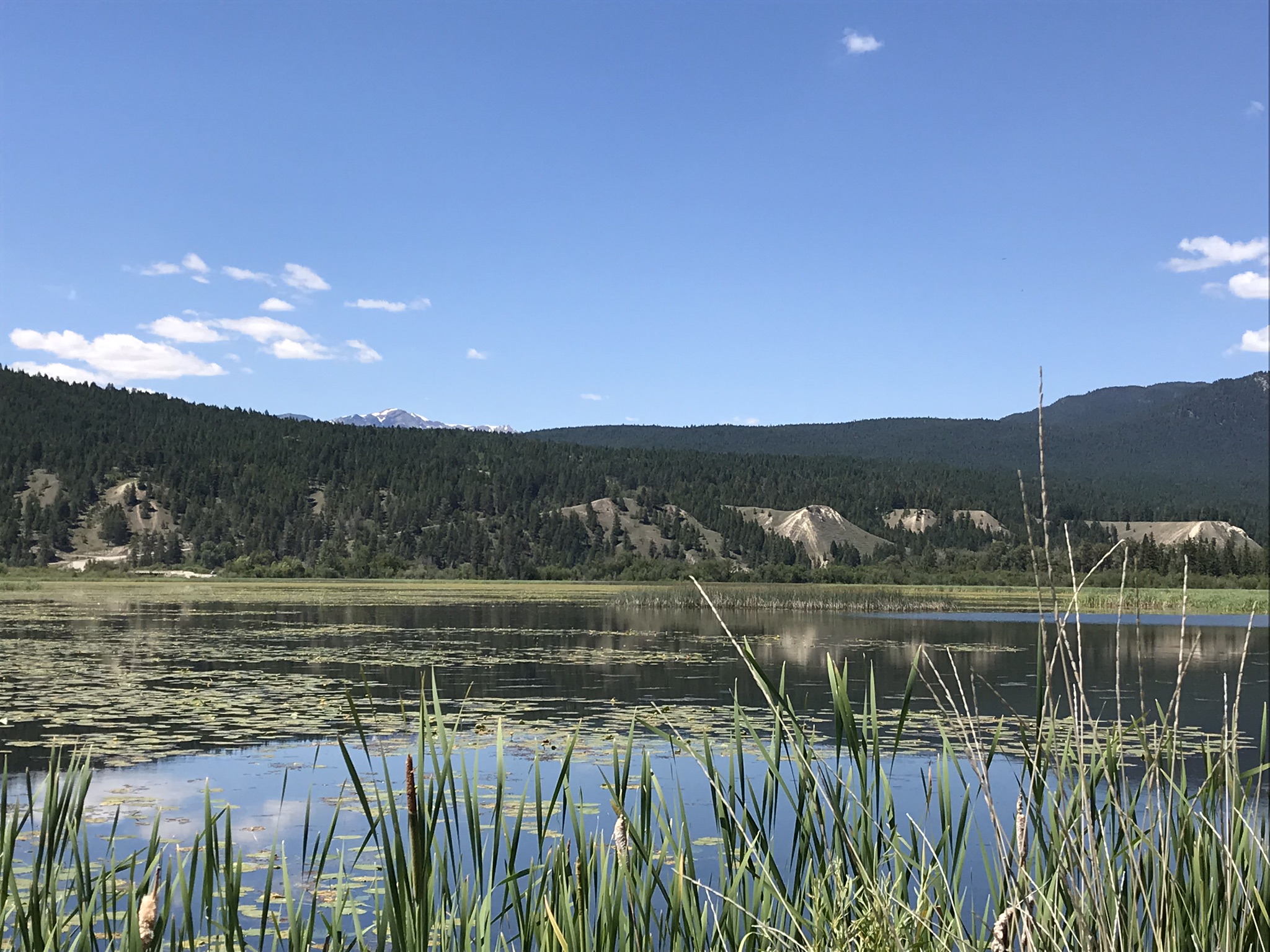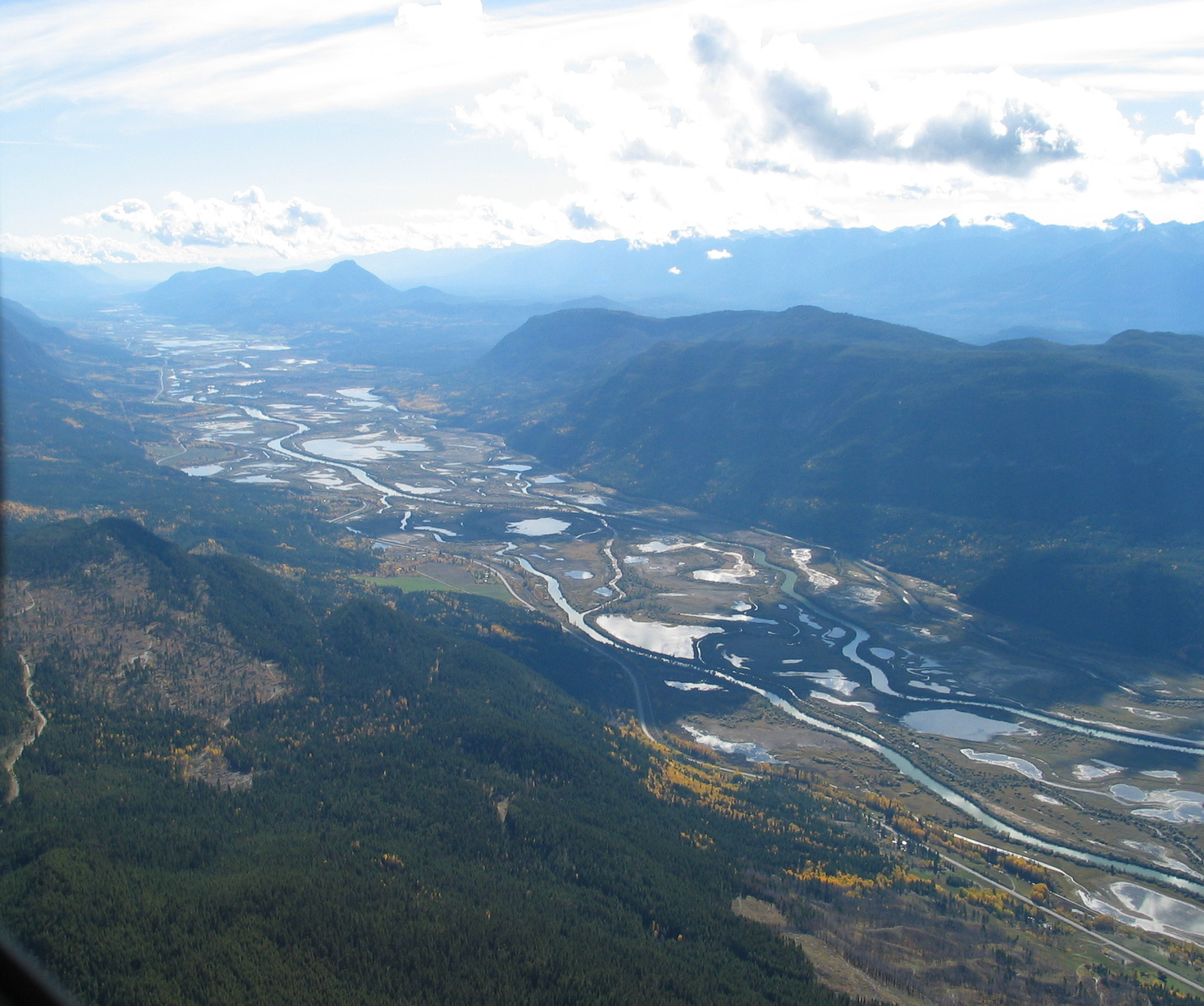Columbia Wetlands visitor use information
The Columbia Wetlands Wildlife Management Area was established for the conservation and management of fish and wildlife habitats and landscape connectivity so that the Columbia River Wetlands continues to function as a natural floodplain ecosystem.
Area restrictions
Motorized access area restrictions are in place to minimize environmental impacts to wetland and upland habitats. Motorized access may cause: abandonment of nests, harassment of wildlife, increased predation, flooding of nests from boat wakes, destruction of emergent vegetation, bank erosion and siltation, and increased invasive plant abundance and spread.
In order to maintain and preserve the wetlands and consistent with the primary intent of the WMA designation, access by motorized conveyances is restricted. Under Section 7 (4) of the Wildlife Act no person may enter the Wildlife Management Area with a conveyance of any description which is powered by a motor which exceeds a rating of 10 horsepower.
Boating restrictions
- Motorized vessels are limited to 20 hp (15 kw) or less on the main channel of the Columbia River.
- No motorized water craft are permitted in the side channels, ponds or wetlands.
- No towing or wakeboarding is permitted in the wetlands or on the main channel of the river.
More information is available in the Boating Restrictions sign (PDF, 4.8MB).
Unsanctioned trails (Dry Gulch area)
The Dry Gulch area has a long history of use due to its proximity to communities, spectacular views and feasible recreation opportunities. Over the last year, Fuels Management and Habitat Enhancement treatments have been applied to units within the wildlife management area. The unsanctioned trails in the area have been deactivated in effort to continue to work towards the protection and enhancement of wildlife and habitat.
The Power Wagon and Stinkin’ Badger trails were unsanctioned trails that existed within the boundaries of the Columbia Wetlands Wildlife Management Area. These trails passed through habitat for many sensitive species and species at risk. The primary objectives for management within the wildlife management area are focused on habitat and wildlife values, not recreation. Deactivation to all user groups was completed in June 2020, and was aimed towards reducing human disturbance levels to benefit wildlife species. The growing popularity of the Deja View trail has increased disturbance levels and has widened sections of the unsanctioned trail, cutting father into its sensitive plant community. Trail deactivation will also remove additional vectors for invasive plant introduction and establishment. Invasive plants displace native species and reduce forage quality for ungulates.
Columbia Wetlands Stewardship Partners
For more information about the Columbia Wetlands, visit the Columbia Wetlands Stewardship Partners site.




